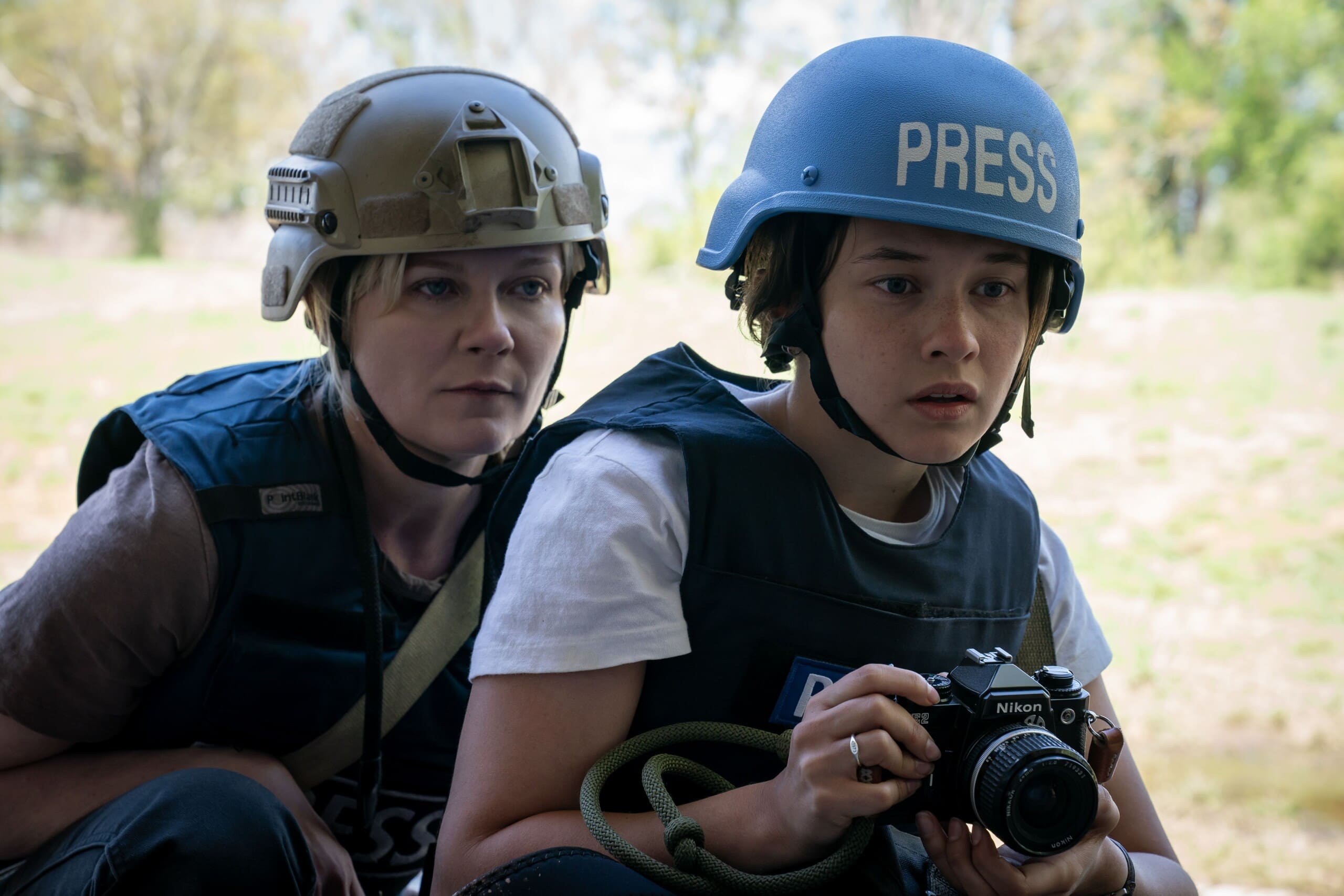
Whatever you think of director Alex Garland’s films, it’s hard to argue that they aren’t technical showcases. Whether it’s the minimalist robots and production design of Ex Machina or the mind-bending sights and sounds of Annihilation, his high concepts and distinct vision allow his films to linger. His newest, Civil War, while high concept in that it depicts a war-torn America set just a few years from now, is perhaps his most straightforward in its filmmaking.
Essentially an action thriller, it follows a group of journalists as they drive toward D.C., where Joel (Wagner Moura) is set to interview the beleaguered American president before enemy forces close in. Along for the ride is famous war photographer Lee Smith (Kirsten Dunst), a fiercely talented and determined journalist who has become jaded by the horror she’s seen. Along the way, they pick up fellow famous journalist Sammy (Stephen McKinley Henderson), and Jessie (Cailee Spaeny), an aspiring photographer who idolizes Lee, but may not be tough enough to follow in her footsteps. The film is, in many ways, a simple road movie. The journalists bond, they follow soldiers into battle, they editorialize about the war. However, Civil War‘s impressive, invigorating filmmaking makes it essential theater viewing.
Garland employs a number of flourishes to keep things interesting. There are the freeze-frames as Lee and Jessie take pictures, the former’s digitally and in color and the latter’s in black-and-white film. Each image helps tell the story, but they also allow the audience to assess the images for themselves, to compare them with our own memories of iconic war photography and judge their merit. The freeze frames are also paired with a dampening of the sound, the vague gunshots or screams conjuring what a viewer who wasn’t there might imagine while looking at these horrible moments in time. Indeed, from its disorienting opening seconds to the deafening gunshots, the film’s soundwork is perhaps its most surprising and satisfying aspect. The only sour notes are the few needle drops, which break the film’s spell at best or feel like non sequiturs at worst.
That said, while Civil War is distinct and challenging in its filmmaking, its ideology is more muddled. Though it seems to take place not long from now and is certainly informed by our current political climate, its ideology is almost self-consciously apolitical. Broadly speaking, Texas and California—which make up the secessionist Western Forces—lean in different directions in the current climate and allying them seems an attempt to keep us from reading into their political leanings within the film. Indeed, the script leaves us guessing on why they joined forces or what they want other than the President’s death. Most of the time, we don’t even know which side the soldiers we see are fighting for.
The closest thing to an ideology comes when our characters are menaced by a band of murderous men in fatigues. Led by a quietly malevolent Jesse Plemmons, we know he and his men are bad news from the way they forcibly kidnap some of the journalists and threaten them in front of a mass grave of civilians. Yet aside from clear xenophobia, the men seem uninterested in what the journalists are doing or what side they’re on. Garland condemns them not through their views, but through their thirst for violence and the fact they threaten our protagonists.
Rather, Garland’s script does little more than generally condemn humanity’s capacity for cruelty and violence. That is until the final minutes. As the action ramps up, the battle becomes the backdrop for what seems to be a critique of the journalists themselves. As explosions and death surround them, Lee, Jessie and Joel become hyper-focused, risking their lives as they give into the thrill of the chase. The final moments (which will remain unspoiled here) are the film’s wriest, the journalists’ skill and persistence slipping from impartiality to a sinister amorality that becomes almost monstrous.
And while that critique is intriguing, it’s both under-explored and beside the point. By making Civil War so determinedly apolitical, Garland risks rendering it meaningless. Sound and fury abound, but it’s up for interpretation what it might signify. Admittedly, that’s perhaps what will allow the film to have broader audience appeal. How can it offend anyone when it refuses to take a side? But as thrilling and engrossing as the film may be, some may yearn for a deeper allegory.

